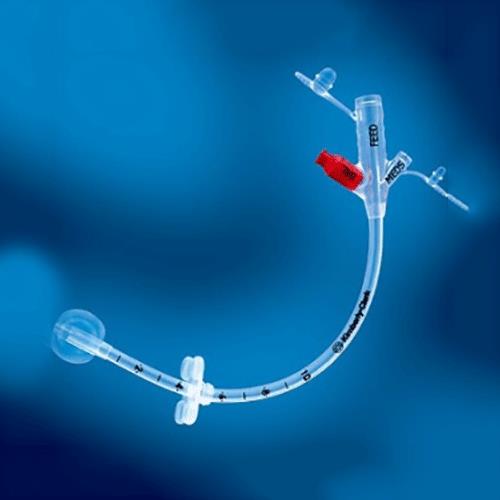Gastrostomy Feeding Tube Care - Common Problems & Solutions
A gastrostomy is a surgical procedure where a feeding tube is inserted through the abdomen and into the stomach in patients having difficulties swallowing the food or essential nutrients by mouth. A feeding tube or G-tube makes it easier for a person to intake necessary nutrients & liquids directly to the stomach. A surgeon puts in a G-tube during a short procedure and the patients who have undergone the surgery can get back to their normal daily activities quickly after they are healed properly.
There are different types of feeding tubes that may be used by surgeons depending on the patient’s medical condition such as AMT mini-one, MIC, MIC-Key, and Cor-Pak. However, it is essential to take proper care of G-tubes at home to ensure effective healing and to avoid any severe complications such as Infections, etc.
Though Bedside wound care experts instruct patients & their caregivers how to care for the G-tube at home right from cleaning, protecting to flushing & venting the tube, some other common complications may arise such as what if the tube falls out or gets blocked, etc. Here, if the patients or caregivers are not aware of how to handle the situation, it can cause severe injuries & complications. This blog explains some of the most common G-Tube problems and solutions. Let’s have a look:

Common G-Tube Problems & Solutions
Blocked/Clogged G-Tube - It is important to flush the tube with enough water before, after, and in between giving medications every 4–6 hours and 3–4 times a day to avoid any clogging or blockage. However, there can be a few reasons that can clog a feeding tube such as:
1. Insufficiently crushed medicines
2. Not flushing the tube after feeding
3. The formula is thick or contains lumps of powder
4. Leaving formula in the tube for a long time etc.
If a feeding tube gets clogged and there are any contents visible in the tube, immediately flush the tube with the warm water through a 10 ML syringe every 10 to 15 minutes. Avoid putting any other object into the tube to remove the blockage or to clean it out. Don’t use soft drinks, fruit juices, or tenderizers to remove the blockage. This can damage the tube. If the clog is not removed with this method, call Wound Care Experts.
Leaked G-Tube - It is important to check the balloon attached to the feeding tube at least one time each month. Though the balloon is made of silicone and can last several months, many things can affect it such as medicines, stomach acid, or the amount of water in the balloon, etc. Signs of balloon leakage include drainage from the stoma and a tube that may seem loosely fitted.
How to check if there is a leakage? A low-profile tube balloon can hold 5–10 ml of sterile water. If it has less water than it should, add sterile water and check the balloon the next day. If it is not full, there might be leakage.
The patient is required to call the doctor. They may replace the tube. Meantime, keep the skin clean & dry. Apply suitable dressing or protective cream.
G-Tube Falls Out - Don’t panic if the tube falls out. It must be reinserted properly immediately so that the hole does not get closed and it may call for additional surgery. However if the feeding tube falls out during the first 8 weeks of initial surgery, it should be replaced by the doctor.
If the caregiver is unable to replace the tube, cover the hole with a clean bandage and then call Wound Care Surgeons. The tube is required to be replaced within 1 to 4 hours as the hole may close. Make sure to keep the old tube so that it could be replaced with the correct size & type.
Excess Tissue Or Skin Growing Out Or Around The Tube - This condition is known as granulation tissue. If there is bleeding in the tissue, it is normal after getting bumped. This is not an emergency but it is always recommended to inform the wound care team to get it treated promptly.
Redness Or Irritation, Soreness, And Bad Odor Around The Stomach - It may be caused by an infection or leakage in the tube. Though a small amount of drainage around the tube is normal, consulting with the doctor's team is a necessary precaution. Always use suitable dressing and keep it clean & dry. Ask for a skin barrier cream.
Damaged Tube - It is important to check the feeding tube daily to make sure it is inserted properly and working efficiently. Check if all the parts are in working condition and the tube is not split. Parts with poor condition are required to be changed immediately.
Loosen Tube - Sometimes tubes become loose and to fix it, carefully pull the tube up until there is a resistance and then push down on the retention disc properly. Avoid pushing the disc more tightly against the skin as it can put too much pressure on the skin.
These are some of the most common problems & solutions that can occur to a person with a feeding tube. In case of any emergency, it is recommended to call a doctor to prevent severe complications.
